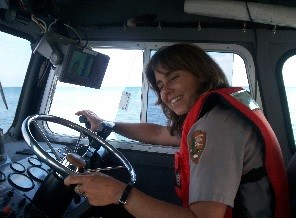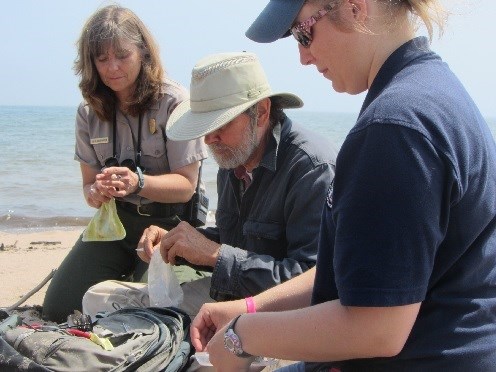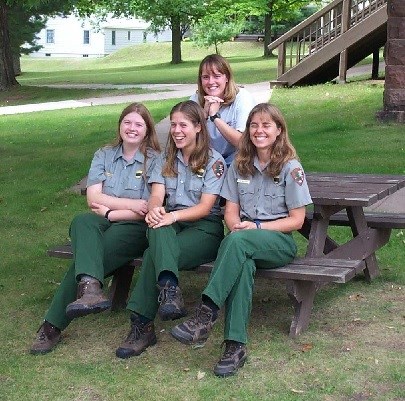
NPS Photo
According to Science and Engineering Indicators 2018, a biennial report prepared by the National Science Board, women remain underrepresented in the science and engineering workforce, but less so than in the past. Historically, men have outnumbered women by wide margins in both these fields. The good news is that the number of women in science and engineering occupations or with degrees in these fields has doubled over the past two decades!1 Julie Van Stappen, Chief of Resource Management at Apostle Islands National Lakeshore, is part of that success story!
Van Stappen grew up in Chicago, Illinois, and when she was young spent vacations and later summers in northern Wisconsin. Julie’s love of nature and the outdoors was enhanced by time spent at the family lake house and with her grandfather, gathering leaves, berries and mushrooms. Julie’s interest in pursuing an education and career in environmental science was shaped by the outdoor experiences of her youth and the environmental movement blossoming around her, as well as working for the US Forest Service and taking environmental coursework at a local technical college. She wanted to play a role in helping to protect the environment.

NPS Photo
While in college, Julie worked as a seasonal employee at Glacier National Park. That experience was life changing and Julie decided that her dream was to be a resource manager for the National Park Service (NPS). Julie received her bachelor's degree in geology from the University of Wisconsin-Oshkosh. She was able to get a permanent position in the National Park Service doing administrative work, went back to school to obtain a graduate degree in natural resources (aquatic ecology), and circled the northwestern part of the country with various NPS positions before landing her dream job at Apostle Islands National Lakeshore (APIS). She has been fortunate in being able to move into positions of more responsibility and leadership at APIS. In her current position, she oversees the natural and cultural resource programs for the park, is the public information officer and wear’s a number of other hats. The resource management staff provide the science needed to help steward the park’s amazing resources. They do this with the help of other park and NPS staff, tribal partners, researchers, other agency staff and volunteers. Natural and cultural resource surveys are done to determine the condition and threats to resources, such as plants, wildlife, ecosystems, archeological sites, historic buildings, and cultural landscapes. Are they thriving and in good condition or are they threatened? What information is needed? What actions are needed to address threats? If the resources need help, Julie enjoys working with a network of NPS staff and partners to identify specific needs and develop management strategies to provide those needs. Julie says technology has been a tremendous asset to resource management at the park. Tools like GPS and remote cameras have helped the staff learn a great deal more about the resources and work more efficiently as well.

NPS Photo
Throughout her career, Van Stappen has seen a shift in the field of resource management to be more balanced between men and women…another sign that good things are happening! In the mean time, Julie continues her work to protect the park resources at Apostle Islands National Lakeshore. She considers herself so fortunate because she is able to work with amazing, dedicated and passionate people to “protect and conserve” our natural and cultural heritage. She encourages women interested in science to break the glass ceiling, and get involved in the fields of science, technology, engineering, and mathematics (STEM).
1. National Science Board. 2018. Science and Engineering Indicators 2018. NSB-2018-1. Alexandria, VA: National Science Foundation. Available at https://www.nsf.gov/statistics/indicators/.
Last updated: August 18, 2020
